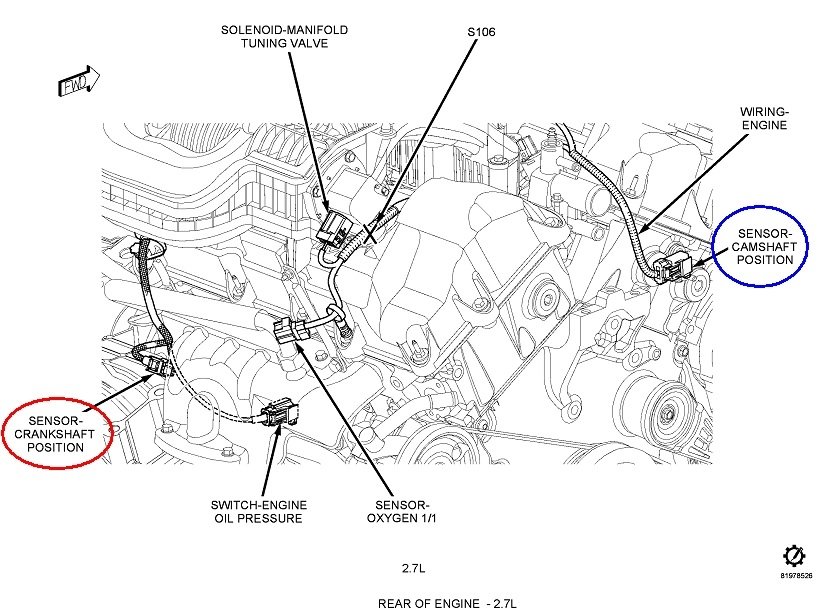This is really confusing. We'll have to sort out the details, then start fresh. The first problem is I need you to clarify "doesn't start". This in itself is confusing because to some people, not cranking means "doesn't start, and to others, cranking at normal speed, but the engine doesn't run means "doesn't start". I always call it a "crank / no-start" when the starter works normally, but the engine won't run, and "no-crank" when the starter doesn't spin the engine or it spins it too slowly.
The next problem is when the Check Engine light turned on, there was at least one diagnostic fault code in memory to lead us to the circuit that needed further diagnosis. It's important to have those codes read and recorded before that valuable information is lost. By disconnecting the battery, the memory in the Engine Computer was cleared, so now it's too late to see that information. It looks like you did get a code for the evaporative emissions system before it was erased, but that system won't prevent the starter system from working or the engine from running.
There's more going on than a simple defective starter motor. The worst possible way to test one is to remove it from the engine. Your mechanic should know that. Even a starter with badly-worn solenoid contacts can appear to work well on a bench test in a shop or auto parts store. That's like saying a piece of string is good, therefore it can be used to tow another car. We want to know if the starter is capable of rotating the engine. The only way to find that out is to test it while it's bolted to the engine. There's a number of simple, quick tests for that, but as I mentioned, there's more going on that just happens to include the starter system. Also, your title was the best description of the problem. The starter cranks the engine, so there's no need to waste time testing what is working.
To add even more frustration, some of the things that can cause this problem often do not set a fault code just from cranking the engine. The computer needs more time to detect the defect, as in when a stalled engine is coasting to a stop. Regardless, the place to start is by reading the fault codes in the Engine Computer. In earlier years Chrysler made doing that yourself much easier than any other manufacturer. Cycle the ignition switch from " off" to "run" three times within five seconds without cranking the engine, leave it in "run", then watch the code numbers appear in the odometer display. Remember, those codes were erased when the battery was disconnected. If you are lucky enough to have them set again, you can go here:
https://www.2carpros.com/trouble_codes/obd2
to see the definitions, or I can interpret them for you. It's important to be aware those codes never say to replace a part or that one is bad. If a sensor or other part is referenced in a fault code, it is actually the cause of that code only about half of the time. First we have to rule out wiring and connector terminal problems before spending money on a part. That code retrieval method no longer works in later year models. If it doesn't work for your '08 model, a scanner or a simple code reader will be needed to read the codes. The people at many auto parts stores can read codes in Engine Computers for free
I'm also confused about the "evap" part you mentioned. The evaporative emissions is a complete system of sensors, valves, solenoids, hoses, and includes the charcoal canister and gas tank. This is where we'd need to know the exact fault code number to know where to start looking. Some refer to a large leak or a small leak. Some refer to insufficient flow within the system. This system can be frustrating and time-consuming to diagnose problems in before we know which part(s) to replace. Toyota is one, for example, that puts almost everything on one giant, expensive assembly. You just replace that and have almost no diagnostic time. For most others, it takes longer to figure out which part is defective, but then we replace just that part.
You also mentioned you installed a used battery that is three years older than its expected life, (thank you for including that detail), then it "didn't start regularly". I don't know what that means.
At this point, since we haven't done any diagnostics yet, the best suspect is an intermittent problem in the TIPM, but that's only a guess for now. The TIPM, (totally integrated power module), is the under-hood fuse box. I don't know how oil could get on that, but I'm sure it can't help if any got inside onto the circuitry.
The TIPM is also involved with the wipers. Lets wait with that for now. If the TIPM has to be replaced to solve the first problem, it might also solve the wiper problem.
See what you can come up with for the diagnostic fault code numbers. If we're able to go further, I'll need to know the engine size too, to find the right wiring diagrams and sensor locations.
Wednesday, July 13th, 2022 AT 3:52 PM




